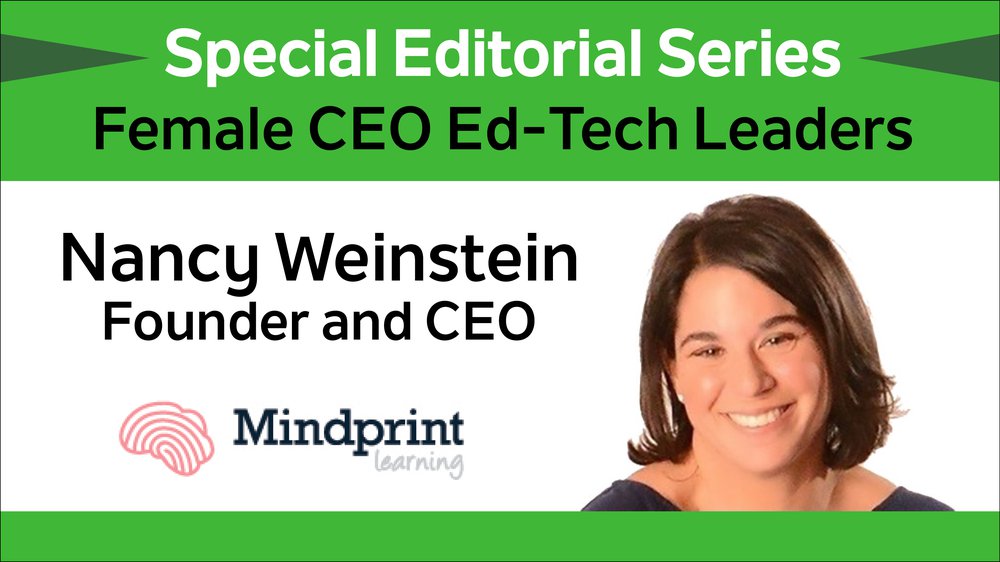Meeting and discussing individualized instruction with Mindprint Learning founder and CEO Nancy Weinstein articulated the importance of discovering how students learn. She supported my interest in improving education through student retention and application. At the same time, she dedicated her time explaining to me the different teaching methods from elementary school to college. Even though we digressed occasionally discussing how we each prepped our kids to learn in a classroom setting, her no-nonsense approach to helping teachers understand how each student learns best was evident throughout our discussion. She objectively and efficiently explained and reinforced the importance of helping a student learn how to learn.
“My daughter had this amazing third-grade teacher. She described my daughter as ‘very bright but not living up to potential’ and it wasn't because of lack of motivation. It was puzzling to her (and us).”
The teacher suggested additional testing beyond the school's traditional standardized testing. “I had no idea that additional testing even existed,” explains Weinstein.
Given her background in bioengineering and business, it was natural for her to do a lot of research about testing methods. She was overwhelmed by the amount of data on how accurate and effective the tests were in pinpointing how to help students think, reason, and remember. “Yet schools weren't offering this testing to most students. It seemed the only reason not to give these tests to all students was the cost. So, we started Mindprint to create a cost-effective solution to deliver this type of testing to every student.”
Mindprint Learning is built around the mission of ensuring that schools can use cognitive data to help every student live up to his or her full potential. Whether it's a struggling student, a bright kid who doesn't always perform, or the vast majority of students who fall in what Weinstein describes the ‘chunky middle’. The assessment program takes the guesswork out and guides the teacher on what students need in order to learn and the best format to deliver instruction. Such formats include pictures, words, activities, and frequency. Determining the students learning method enables the teachers to spend more of their time working with the students by communicating, engaging, and explaining.
Weinstein feels parents play a critical role in reinforcing Mindprint Learning strategies during homework time. Students benefit from consistent reinforcement of strategies at home and at school. “We don’t want a teacher showing a student the best strategy and a parent suggesting something different because it’s not the strategy they used when they were in school. It’s important that parents recognize we all learn differently,” adds Weinstein.
Weinstein points out the importance of the student to take responsibility for using the learning strategies over time. “School is not only about learning content. It’s about learning how to learn.”
The teachers use Mindprint Learning to develop students’ self-awareness of how they learn best. With the help of the teacher and parents, the students’ self-awareness of how they learn gradually builds so they are prepared to work independently.
The biggest challenge Weinstein and her company experience is the fact that teachers have an increasing amount of data being thrown in their direction. “If we aren't careful, Mindprint can feel like one more piece of data they need to look at and one more thing that teachers need to do.”
Mindprint Learning wants teachers to realize that the testing frees them up from the time spent trying to make sense of achievement data and support planning. That way, teachers can focus on what they love to do, which is spending time with students to help them learn and succeed.
Weinstein and her staff found the most effective way to overcome this challenge is to let teachers take the Mindprint Learning test themselves. Taking the test enables teachers to understand how they learn best, which includes their own learning strengths and needs. “We will have a room full of teachers take Mindprint in a PD (Professional Development) session. At the end, nearly every single one will say ‘I wish I had this when I was a student’. As you might imagine, at that point they are excited to have their students use Mindprint. It's a very powerful experience.”
As CEO, her primary focus is awareness. Every person has a unique combination of learning strengths and needs. People need to understand those skills drive academic achievement and personal motivation. “Unfortunately, 50 years ago there was no affordable and effective way to analyze learning strengths and needs for every student, so schools focused on what was easiest to measure: achievement,” explains Weinstein. “I'm thrilled that Mindprint can affordably deliver this data for every student. It is my job to make teachers and administrators aware that this critical information is now easily accessible to them. So that's where I spend the majority of my time. Letting educators know that what they thought was impossible is possible, and how they can use that data to significantly improve learning outcomes and engagement.”
As our discussion came to an end, I knew she worked at Disney’s educational technology division. So, I had to ask about her experience at Disney. “Disney’s mission is all about making people happy, with or without technology. It does bill itself as the ‘happiest place on earth’. I've worked in other industries, and there is truly something special about knowing the work you do is making people happier, especially children. At Mindprint, we make kids happier by ensuring adults understand them and helping them succeed in school. Knowing we help kids every day motivates me. Realistically, every job has its ups and downs, including this one, but when you know you are helping kids enjoy learning and discovering their gifts and life purpose, it's easy to keep going, even on the rough days.”











